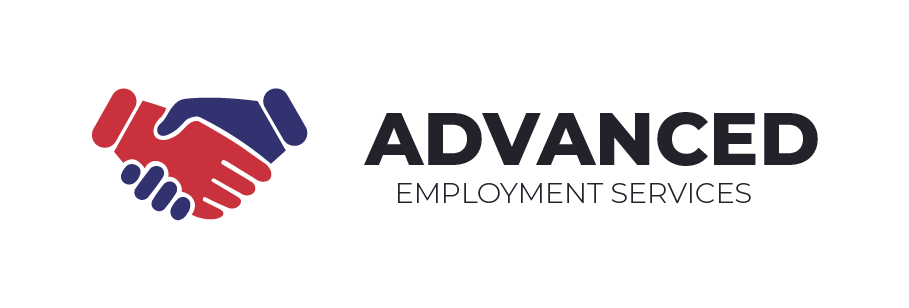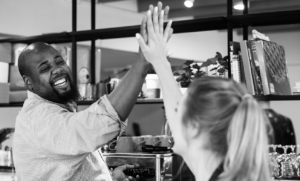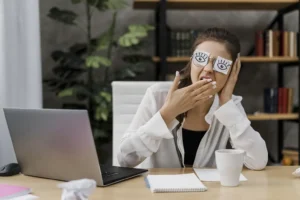Table of Contents
What you wear to work sends a message—whether you intend it or not. Dress codes are more than rules for office fashion—they reflect a company’s values, expectations, and workplace culture. Understanding appropriate workplace attire is essential for job seekers and employees to make a strong impression and integrate into a professional environment. In today’s evolving workforce, where industries range from startup tech firms to traditional law offices, “what should I wear to work?” is no longer answered with one-size-fits-all advice.
This article from Advanced Employment Services explores how workplace trends shape dress codes, how they influence professional opportunities, and why being appropriately dressed still matters in an age of increasing casualization.
The Role of Dress Codes in the Workplace
Dress codes are policies set by employers that outline what is acceptable attire for their team. They range from formal business wear to smart casual or even uniform-specific requirements. While some industries maintain strict codes (such as law or finance), others embrace more relaxed norms. Understanding and respecting a company’s dress code is vital to workplace professionalism.
In a 2023 survey by JobSage, 62% of employees reported that their workplace had an enforced dress code. Among those, 44% said the dress code improved the company’s image, and 39% believed it encouraged employee respect and decorum. On the other hand, 31% of respondents felt dress codes could be overly restrictive, particularly in creative or tech-driven environments.
Advanced Employment Services frequently helps candidates navigate these expectations by aligning job seekers with employers who match their values and comfort levels, including dress codes.
Types of Workplace Dress Codes
Dress codes typically fall into one of the following categories:
1. Business Formal
This is the most traditional dress code, standard in finance, law, and executive-level roles. Think tailored suits, dress shoes, and ties. It’s about projecting authority and professionalism.
What to wear:
- Men: Dark suit and tie, polished dress shoes
- Women: Pantsuit or skirt suit, closed-toe heels, minimal accessories
2. Business Professional
Slightly less rigid than business formal, this dress code still emphasizes a polished, conservative appearance.
What to wear:
- Men: Dress slacks and button-down shirt, possibly with a blazer
- Women: Blouses with trousers or skirts, cardigans, modest heels
3. Business Casual
Today’s most common office attire is especially prevalent in marketing, education, and healthcare administration.
What to wear:
- Men: Collared shirts, chinos, loafers
- Women: Blouses, dress pants, knee-length dresses, flats or low heels
4. Casual or Creative Casual
Often seen in tech startups or creative agencies. The rules are loose, but should still reflect professionalism.
What to wear:
- Men and Women: Neat jeans, polos, casual dresses, sneakers (clean and appropriate)
5. Uniform or Industry-Specific
Hospitality, healthcare, construction, and manufacturing often have uniforms or industry-specific safety attire.
What to wear:
- As provided or dictated by the employer (scrubs, reflective gear, aprons, etc.)
Understanding dress codes is crucial when preparing for interviews or new jobs. If you’re unsure what’s appropriate, Advanced Employment Services recommends dressing one level more formal than you expect for a first impression.
Why Dress Code Still Matters
1. Perception and First Impressions
Numerous studies confirm that clothing affects first impressions. A report from Science of People found that observers made 80% of judgments about someone within the first seven seconds of meeting them, based significantly on appearance. Showing underdressed can give the impression of being unprepared or not taking the opportunity seriously.
2. Productivity and Morale
A 2019 Academy of Management Journal study found that employees who adhered to dress codes felt a greater sense of belonging and accountability, increasing job satisfaction and productivity. Uniforms and consistent dress policies can foster unity among teams.
3. Compliance and Safety
In many fields, dress codes aren’t just about appearance. In manufacturing, food service, and healthcare, clothing policies protect employees and clients from hazards and contamination. Following dress guidelines is critical to safety, hygiene, and regulatory compliance.
Adapting to Modern Trends: Remote Work and Hybrid Models
The conversation around dress code is shifting with the rise of remote and hybrid work environments. According to a 2022 Gallup survey, nearly 53% of U.S. workers reported working in a hybrid setting. While many employers relaxed dress policies during this shift, employees are still encouraged to maintain appropriate standards, especially on video calls or in-person meetings.
Experts recommend maintaining a “video-call ready” zone: attire that looks professional from the waist up, even if you’re working from home. And while your cat won’t care what you wear, your manager likely will.
Tips: What Should I Wear to Work?
Whether you’re entering a new industry or starting a new role, answering the question “what should I wear to work?” can be simplified with a few thoughtful strategies:
- Ask HR: Most human resources departments can offer a dress code policy or give insight into expectations.
- Observe Peers: If you’re in the office, look around and take cues from colleagues.
- Go Neutral First: On your first few days, stick to polished neutrals that suit most dress codes. Adjust once you’re confident.
- Avoid Casual Pitfalls: Flip-flops, graphic tees, and ripped jeans are seldom appropriate in professional settings.
- Check for Branding or Logos: Avoid competitor logos or anything that could reflect poorly on the employer in retail or customer service.
Supporting Job Seekers Through Dress Code Education
At Advanced Employment Services, recruiters and placement professionals regularly advise job seekers on dress expectations for specific employers. Some industries place a high value on “dressing the part,” and not conforming can lead to missed opportunities, even if the qualifications are perfect.
Advanced Employment Services goes a step further by offering one-on-one coaching to help candidates understand what to wear and why it matters. These insights can boost confidence during interviews and help individuals transition smoothly into their new roles.
Dress Codes and Equity in Hiring
One overlooked issue with workplace dress codes is how they can disproportionately affect people from different socioeconomic backgrounds. Buying appropriate clothing can be a financial burden. In a 2021 survey by Dress for Success, 60% of job seekers said they had skipped interviews or opportunities because they lacked suitable clothing.
That’s why some employment agencies and nonprofit partners offer clothing stipends or access to donated attire. Dress codes should never become barriers to access, and more companies are re-evaluating their policies to include cultural, religious, and financial considerations.
Conclusion: Dress with Intention
While dress codes may seem like a relic of the past in some circles, they remain an essential part of modern work culture. They signal readiness, attention to detail, and respect for the professional setting. Understanding and adapting to expectations is key, whether your job requires a tailored suit or allows for sneakers and a hoodie.
So, do you know what you should wear to work? If unsure, turn to trusted advisors like Advanced Employment Services, which offers career guidance that includes practical tips like dressing for your next opportunity. Professional guidance can make all the difference, whether you’re preparing for an interview, starting a new role, or just trying to decode workplace attire.



